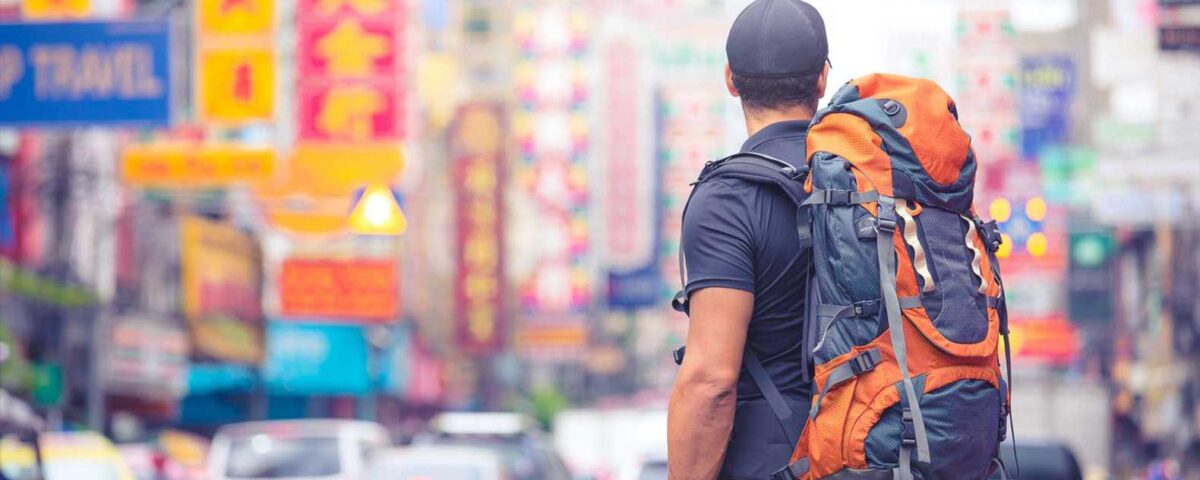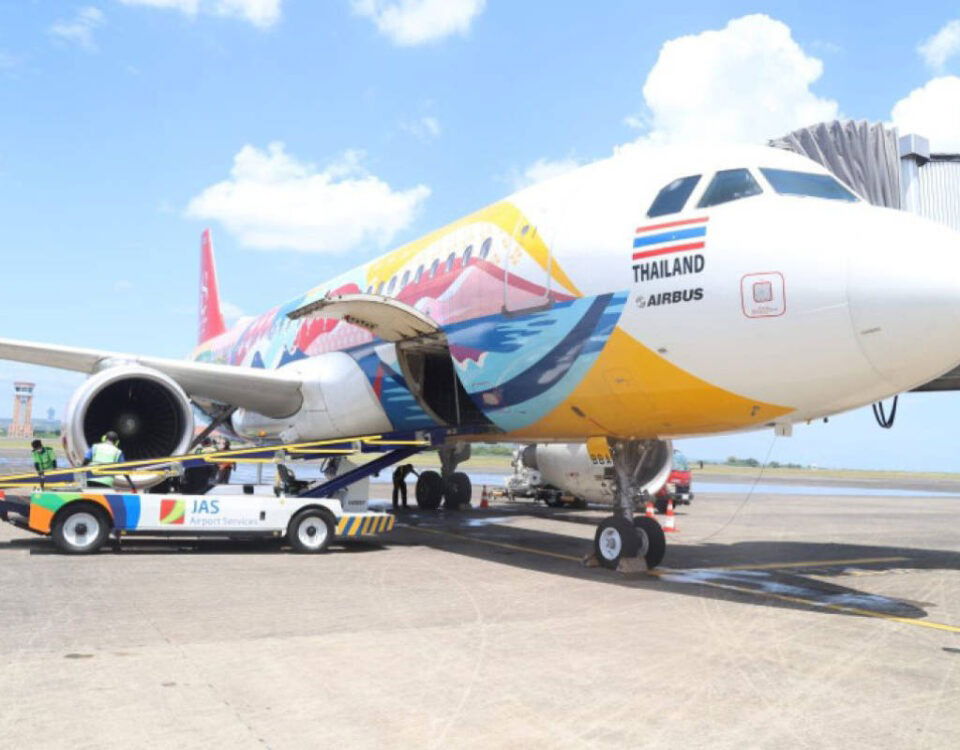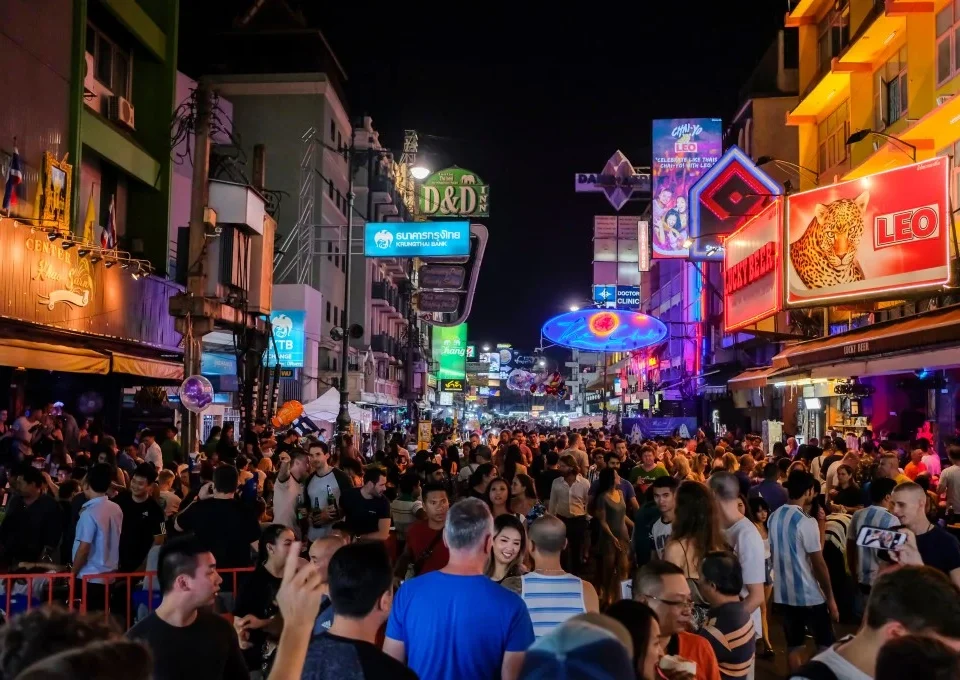
First Time Traveling to Thailand – How to Prepare
07/04/2025
Thailand Visa Policies in 2025: What’s New
14/04/2025Planning a trip to Thailand in 2025? Whether you’re dreaming of Bangkok’s vibrant streets, Phuket’s pristine beaches, or Chiang Mai’s serene temples, one question looms large: How much will it cost? Fortunately, Thailand remains one of the world’s most budget-friendly travel destinations, offering incredible experiences for travelers of all financial stripes. In this comprehensive guide, we’ll break down the costs of a 2025 Thailand trip, share expert budgeting tips, and reveal money-saving hacks to stretch your Thai Baht further. Plus, we’ll tie in how the Thailand Digital Arrival Card (TDAC) simplifies your entry, saving you time—and potentially money—at the border.
From flights and accommodation to food, transportation, and activities, this article has everything you need to plan a wallet-friendly Thailand adventure. Let’s dive into how to budget for your 2025 Thailand trip!
Why Budgeting for Thailand in 2025 Matters
Thailand’s affordability is legendary among travelers, but costs can vary wildly depending on your travel style, destinations, and planning savvy. In 2025, expect slight price increases due to inflation and tourism recovery, yet the Land of Smiles still offers unbeatable value compared to Western destinations. By budgeting smartly, you can enjoy Thailand’s rich culture, stunning landscapes, and mouthwatering cuisine without breaking the bank.
This guide targets three traveler types:
- Budget Backpackers: $30–$50/day
- Mid-Range Explorers: $50–$100/day
- Comfort Seekers: $100–$150/day
No matter your style, we’ll help you craft a Thailand travel budget that works. Let’s start with the big-ticket items.
Thailand Trip Costs in 2025: A Detailed Breakdown
1. Flights to Thailand
Your journey begins with getting to Thailand, and flight costs depend on your departure city, booking timing, and flexibility.
- From North America: Round-trip flights from cities like New York, Los Angeles, or Toronto typically range from $600–$1,200. Budget airlines like Norse Atlantic or AirAsia can dip as low as $500 if booked 6–9 months ahead.
- From Europe: Expect $450–$900 from London, Paris, or Frankfurt. Low-cost carriers like Scoot or Turkish Airlines often offer deals under $500 during off-peak seasons.
- From Australia: Flights from Sydney or Melbourne hover between $300–$700, with Jetstar and Scoot providing budget options.
Money-Saving Hack: Use flight comparison tools like Google Flights or Skyscanner, set price alerts, and aim for shoulder seasons (April–May or September–October) to snag cheaper fares. Midweek flights (Tuesday or Wednesday) are often less expensive than weekends.
2. Accommodation Costs
Thailand offers lodging for every budget, from dirt-cheap hostels to luxe resorts. Here’s what to expect in 2025:
- Hostels: $5–$15/night for a dorm bed in Bangkok, Chiang Mai, or Phuket. Look for places with free breakfast or communal kitchens to cut costs further.
- Budget Guesthouses/Hotels: $15–$40/night for a private room with basic amenities. These are common in less touristy areas like Krabi or Pai.
- Mid-Range Hotels: $40–$80/night for 3-star comfort, often with pools and breakfast included.
- Luxury Resorts: $100–$300+/night in hotspots like Koh Samui or Pattaya.
Money-Saving Hack: Book via platforms like Booking.com or Agoda 2–3 months in advance for discounts. Opt for guesthouses in quieter towns (e.g., Ayutthaya) over tourist hubs to save 20–30%. If traveling with a friend, splitting a private room often beats two dorm beds.
3. Food and Drinks
Thailand’s food scene is a budget traveler’s dream, with street eats as delicious as they are affordable.
- Street Food: $1–$3/meal. Think pad Thai, mango sticky rice, or grilled skewers from local vendors.
- Local Restaurants: $3–$7/meal for sit-down dishes like green curry or tom yum.
- Western Food: $8–$15/meal in tourist areas—stick to Thai cuisine to save!
- Drinks: $1–$2 for a local beer (Chang or Singha) at 7-Eleven; $3–$5 at bars. Bottled water is $0.30–$0.50.
Money-Saving Hack: Eat where locals eat—look for busy stalls with quick turnover for freshness and value. Buy drinks at convenience stores instead of restaurants or bars to halve your bill. Avoid touristy spots like Patong Beach for meals; a 10-minute walk inland can save you $5–$10 per plate.
4. Transportation
Getting around Thailand is cheap and efficient if you know the ropes.
- Local Transport:
- Bangkok BTS/MRT: $0.50–$2/ride
- Songthaews (shared trucks): $0.50–$1/trip
- Tuk-tuks: $2–$5 (negotiate hard!)
- Intercity Travel:
- Buses: $5–$15 (e.g., Bangkok to Chiang Mai, ~$10)
- Trains: $10–$30 (overnight sleeper from Bangkok to Surat Thani, ~$20)
- Domestic Flights: $30–$80 (book early with Thai Lion Air or Nok Air)
- Island Ferries: $7–$20 (e.g., Phuket to Phi Phi, ~$15)
Money-Saving Hack: Skip taxis and tuk-tuks in favor of Grab (Asia’s Uber equivalent) for transparent pricing. Book overnight buses or trains to save on accommodation costs while traveling long distances. For island-hopping, bundle ferry tickets with a travel agency for discounts.
5. Activities and Attractions
Thailand’s attractions range from free temples to pricey tours—here’s the rundown:
- Temples: Free–$5 (e.g., Wat Pho in Bangkok, $5 entry)
- National Parks: $5–$10 (e.g., Doi Inthanon, ~$8)
- Island Tours: $20–$50 (e.g., Phi Phi snorkeling day trip)
- Cooking Classes: $25–$40
- Muay Thai Matches: $10–$30
Money-Saving Hack: Focus on free or low-cost experiences like temple-hopping, hiking, or beach lounging. Book tours in person at local agencies (not online) to haggle 10–20% off. Avoid “dual pricing” traps at some attractions by showing your TDAC approval as proof of legal entry—it occasionally sways staff to charge local rates.
6. Miscellaneous Costs
- Visa/Entry: Most nationalities get a 30-day visa exemption (free). The TDAC, mandatory for 2025 entry, is free and streamlines arrival (more on this later).
- SIM Card: $5–$15 for a 30-day plan with 10–30GB data (AIS or TrueMove).
- Travel Insurance: $20–$50 for a 2-week trip.
Money-Saving Hack: Get a local SIM at the airport or a 7-Eleven for better rates than tourist kiosks. Compare insurance on sites like World Nomads for affordable coverage.
Sample Budgets for Your 2025 Thailand Trip
Here’s how daily costs stack up for a 14-day trip, excluding flights:
Budget Backpacker ($30–$50/day)
- Accommodation: $10 (hostel dorm)
- Food: $10 (street food + 7-Eleven snacks)
- Transport: $5 (local buses, songthaews)
- Activities: $5 (temples, free beaches)
- Total: $30–$50/day | $420–$700 for 14 days
Mid-Range Explorer ($50–$100/day)
- Accommodation: $30 (budget hotel)
- Food: $20 (local restaurants + occasional Western meal)
- Transport: $15 (Grab, intercity bus)
- Activities: $15 (tours, national parks)
- Total: $50–$100/day | $700–$1,400 for 14 days
Comfort Seeker ($100–$150/day)
- Accommodation: $70 (mid-range hotel)
- Food: $30 (restaurants + drinks)
- Transport: $20 (taxis, domestic flight)
- Activities: $30 (cooking class, island tour)
- Total: $100–$150/day | $1,400–$2,100 for 14 days
Top Money-Saving Hacks for Your Thailand Trip
1. Travel During Shoulder Seasons
High season (November–February) brings crowds and inflated prices. Shoulder seasons (April–May, September–October) offer cheaper flights, lodging, and tours, with fewer tourists. April’s heat or September’s rain might inconvenience you slightly, but savings of 20–40% make it worthwhile.
SEO Tip: Targeting “Thailand shoulder season travel 2025” can capture bargain-hunters.
2. Leverage the Thailand Digital Arrival Card (TDAC)
The TDAC, introduced to replace paper arrival forms, is a free online registration required for all 2025 visitors. Apply 7–30 days before arrival via the official TDAC portal (linked on tdac.info). It saves time at immigration, reducing the chance of costly delays or missed connections. Plus, a smooth entry keeps your budget intact.
WordPress Tip: Add a CTA like “Learn more about TDAC rules ” with an internal link to your existing TDAC article.
3. Eat Like a Local
Thailand’s street food isn’t just cheap—it’s fresher and tastier than many overpriced tourist joints. A $2 bowl of khao soi in Chiang Mai beats a $10 burger in Phuket any day. Hit markets like Chatuchak in Bangkok or Warorot in Chiang Mai for authentic eats under $3.
Money-Saving Hack: Carry a reusable water bottle and refill at your accommodation—tap water isn’t potable, but you’ll save $1–$2 daily over bottled purchases.
4. Master Public Transportation
Thailand’s buses, trains, and ferries are budget superstars. A 12-hour night bus from Bangkok to Krabi costs $15 and doubles as a hotel room. In cities, skip tuk-tuks (often $5 for a short ride) for BTS/MRT ($1–$2) or songthaews ($0.50).
Pro Tip: Use 12Go.asia to book intercity transport in advance—prices are often 10–15% lower online.
5. Bargain Wisely
Haggling is expected at markets and with tuk-tuk drivers. Start at 50% of the quoted price and settle around 70%. For example, a 200 THB ($6) ride might drop to 140 THB ($4) with a smile and firm negotiation.
SEO Tip: Include “how to bargain in Thailand 2025” as a subheading to target niche queries.
6. Avoid Tourist Traps
Phuket’s Patong Beach and Koh Phi Phi’s party zones jack up prices for everything. Instead, explore Koh Lanta ($10/night guesthouses) or Isaan’s rural charm (meals under $2). You’ll save cash and dodge crowds.
7. Use Fee-Free Money Options
ATMs charge 220–250 THB ($6–$7) per withdrawal, plus your bank’s fees. Bring a Wise or Revolut card for fee-free withdrawals up to a limit, or exchange cash at SuperRich booths in Bangkok for better rates than airports.
Planning Your Thailand Itinerary on a Budget
Here’s a sample 14-day itinerary blending affordability and adventure:
- Days 1–3: Bangkok ($35/day)
- Stay: Hostel near Khao San Road ($10)
- Eat: Street food at Chinatown ($5/day)
- Do: Free temples (Wat Arun), Grand Palace ($15 once)
- Move: BTS ($2/day)
- Days 4–6: Chiang Mai ($40/day)
- Stay: Guesthouse in Old City ($15)
- Eat: Night Bazaar stalls ($6/day)
- Do: Doi Suthep ($5), free monk chats
- Move: Red truck ($1/day), bus from Bangkok ($10)
- Days 7–10: Krabi/Ao Nang ($50/day)
- Stay: Budget hotel ($20)
- Eat: Local seafood ($8/day)
- Do: Railay Beach (free), 4-Island Tour ($20)
- Move: Night bus from Chiang Mai ($15)
- Days 11–14: Koh Lanta ($45/day)
- Stay: Beach bungalow ($18)
- Eat: Local eateries ($7/day)
- Do: Snorkeling ($15), free beaches
- Move: Ferry from Krabi ($10)
Total Cost: $560–$700 (budget range)
WordPress Tip: Embed a Google Map with pins for these destinations to boost engagement.
Budgeting Tools and Resources
- Apps:
- Trail Wallet: Track daily expenses.
- Grab: Affordable rides.
- Klook: Discounted activities.
- Websites:
- tdac.info: TDAC updates and travel tips.
- 12Go.asia: Transport bookings.
- Numbeo: Real-time cost comparisons.
Final Thoughts: Budgeting Your 2025 Thailand Trip
Thailand in 2025 promises adventure, culture, and relaxation at a fraction of Western prices—if you plan smartly. By targeting affordable destinations, eating local, and using cost-saving hacks, you can craft a trip that’s as rich in experience as it is light on your wallet. The TDAC simplifies entry, leaving you more time to explore and less stress over logistics.
Ready to start budgeting? Calculate your daily costs, book early, and embrace Thailand’s budget-friendly vibe. Have questions or hacks of your own? Drop a comment below—we’d love to hear from you!




